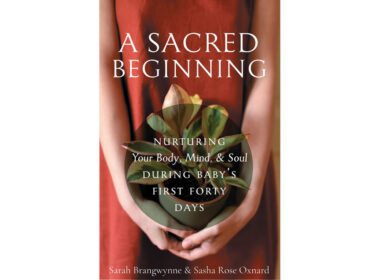Blood clots are a big deal. While they are not usually fatal for young women in particular, life-as-you-know-it is still guaranteed to change. 32-year-old Diana first experienced blood clot symptoms in 2022 during the national rowing championship. She was later diagnosed with and hospitalized for life-threatening pulmonary emboli, a blood clot in each lung. Thankfully, she was eventually able to return to rowing. Still, as she summed up “there are some physical consequences but fear and doubt are the most difficult to overcome. It has been hard.”
Many women don’t know that medicines they take regularly or even every day can increase their blood clot risk. If you’ve ever pulled a muscle, experienced a migraine, or sprained an ankle, you’ve likely taken a nonsteroidal anti-inflammatory drug (NSAID) like Advil or Aleve to help with the pain. Women may also take Midol (which contains the NSAID Naproxen) monthly for period cramps or PMS symptoms. These common pain relievers can be a real help in a pinch when experiencing pain, but if you’re also on hormonal birth control, you may have just significantly increased your odds of experiencing a blood clot.
Isn’t blood supposed to clot?
Blood naturally clots or clumps or congeals in response to an injury, like when someone cuts their finger. Red blood cells and platelets plus specific clotting proteins build up and allow the area to stop actively bleeding in order to heal. This process is critical to human health, but sometimes blood clots without a good cause. When blood pools in a vein and causes a clot, it’s called a venous clot.
Venous clots most often form in the deep veins of the leg (this is called a deep vein thrombosis or DVT). If a portion of a DVT breaks off, it can travel to other veins or arteries, causing blockage to major organs. The clot most often will travel to the lung; this is called a pulmonary embolism. A clot in the brain causes a stroke. A clot in the heart causes a heart attack.
Unlike the beneficial clotting process that happens when we have a cut, these occurrences can be life threatening or permanently damaging to a person’s health. Even if, as in Diana’s case above, the clot isn’t fatal, it can cause lifelong consequences, including serious handicap or lifelong negative effects.
Symptoms of a blood clot may include fast heartbeat, leg swelling, pain or difficulty breathing.
Birth control increases blood clot risk, as does NSAID use
Hormonal birth control increases a woman’s risk of experiencing a blood clot. There are many tragic stories like those of Alexandra Williams or Alex Rowan, two healthy young women who unexpectedly died from birth control-induced blood clots. It’s also known that NSAIDS increase a person’s risk of blood clots [1]. None of this information is new, and both risks are reported to be relatively low. But a new study suggests that when women take birth control and NSAIDs together, the risk doesn’t just add up—it compounds.
But how much does blood clot risk increase when women take both birth control and NSAIDs?
Researchers at the University of Copenhagen in Denmark reviewed medical records of more than 2 million women of reproductive years (ages 15-49) across a 20 year time span [2]. They looked at women who had never had a blood clot before and were considered at low-risk or no-risk . The study explored what the likelihood would be for these low-risk to no-risk women when taking birth control and using NSAIDs for one week (the estimated time to consume 30 NSAID pills, since the majority of the time women received just one package of 30 pills).The results were surprising!
Here’s exactly how much birth control use increased blood clot risk in women on NSAIDs
While researchers knew that both caused a degree of increase in risk, the study revealed exactly how much that risk of blood clots increased when using NSAIDS and birth control. The results weren’t simply a 2+4=6 equation. NSAID use combined with birth control use synergistically multiplied blood clot risk.
Here are the stats:
- For women using NSAIDs alone, there’s around a 4 in 100,000 chance of developing a blood clot
- For women using “high risk” birth control (any contraceptive containing more than 50 mcg of estrogen), there is around a 2 in 100,000 chance of developing a blood clot.
- When they looked at women on high risk birth control who also take NSAIDs, the odds skyrocketed to an estimated 23 of 100,000 women developing a blood clot
The increase in risk was not limited to oral contraceptives. Increased risk also came from use of rings, patches, and some IUDS that used estrogen to prevent pregnancy. (Of note, estrogen isn’t used in any of the IUDs sold in the United States, but some IUDs sold abroad do contain it).
How to reduce your risk
This can be scary news for those on birth control. Thankfully, there are alternatives! The study also revealed that women utilizing methods of birth control with low to no increased risk of blood clots did not see this drastic increase in risk when using NSAIDs. There are many forms of birth control that do not include hormonal components. Examples of non-hormonal birth control are barrier methods (like condoms or diaphragms), spermicide, withdrawal, or copper IUD. But these methods, while they don’t increase blood clot risk, do come with other potential risks and side effects.
There are methods of birth control that have no risk for blood clots, no known side effects, and remain extremely effective at avoiding pregnancy. Fertility awareness methods (FAMs, also known as fertility awareness-based methods or FABMs) are effective at avoiding pregnancy and include no chemicals, hormones, or implants that could affect health. Instead of using synthetic hormones to shut down the body’s natural reproductive cycle, fertility awareness methods encourage women to engage with their reproductive health to know when they are naturally fertile or infertile. These methods promote an overall better understanding of their reproductive health and access to root cause solutions to women’s health problems rather than Band-Aid fixes.
References:
[1] Schmidt, M et al. “Non-steroidal anti-inflammatory drug use and risk of venous thromboembolism.” Journal of thrombosis and haemostasis : JTH vol. 9,7 (2011): 1326-33. doi:10.1111/j.1538-7836.2011.04354.x [2] Meaidi, Amani et al. “Venous thromboembolism with use of hormonal contraception and non-steroidal anti-inflammatory drugs: nationwide cohort study.” BMJ (Clinical research ed.) vol. 382 e074450. 6 Sep. 2023, doi:10.1136/bmj-2022-074450






